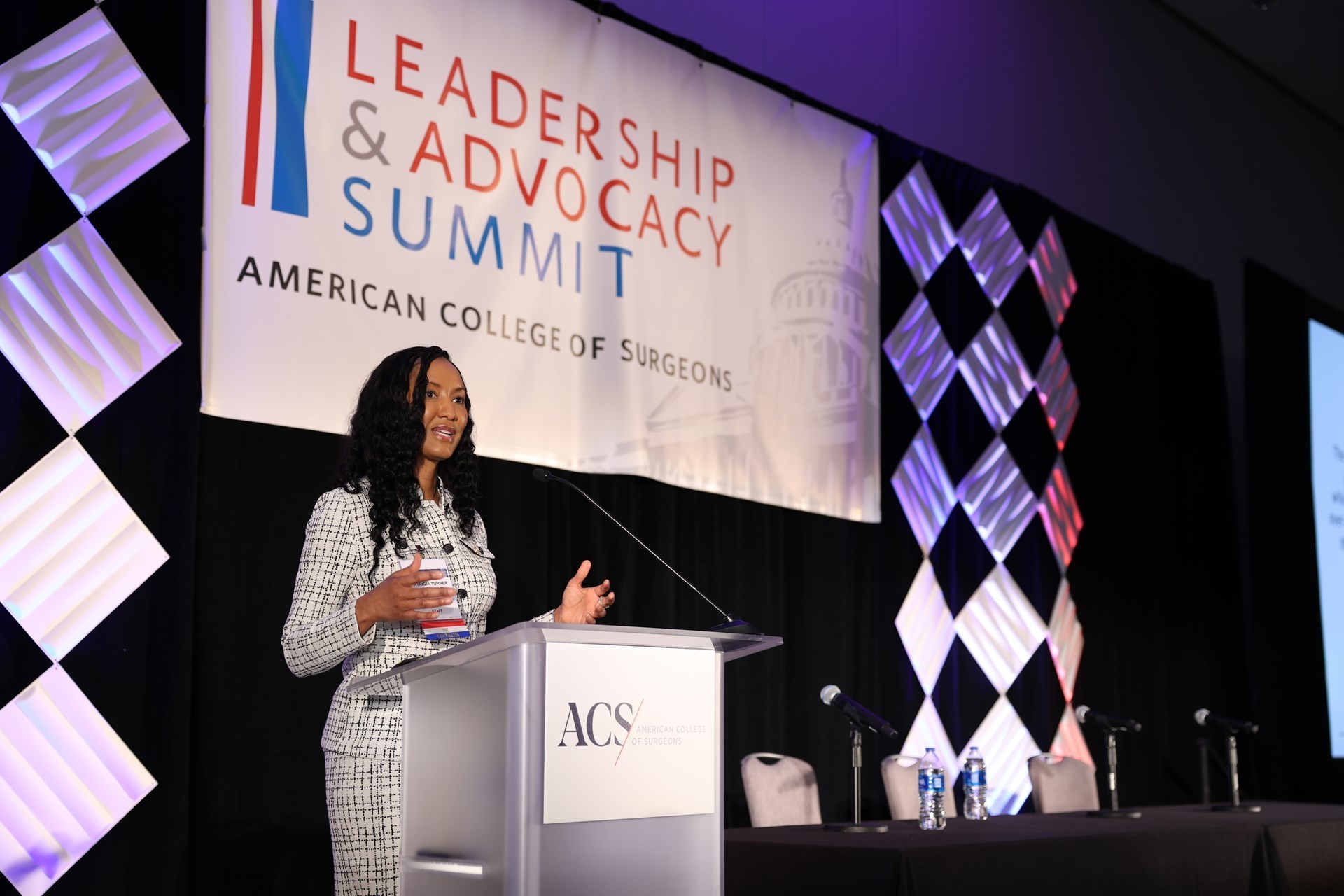By Glenn A. Gonzalez, MD, and James Harrop MD, MSQHS, FACS, Chair, ACS Advisory Council for Neurological Surgery
Spinal cord injury (SCI) is a significant source of global healthcare costs and morbidity. According to the National Spinal Cord Injury Statistics Center (NSCISC), the annual incidence of SCI is approximately 54 cases per 1 million people in the US, or approximately 17,700 new SCI cases per year. SCI can have a sudden and sometimes catastrophic impact on quality of life, resulting in severe motor, sensory, and autonomic dysfunction.
A collaborative effort has been made in recent years to develop new therapies that improve recovery for SCI patients. These therapies are intended to address the limited recovery capacity evidenced in the central nervous system. It has been essential to standardize the management and treatment of this condition. The use of the American Spinal Injury Association (ASIA) Impairment Scale has been well accepted for the evaluation of the functional impairment each patient presents.
"Time is brain" is a phrase most often used when discussing the management of acute ischemic stroke. However, in recent years, multiple studies have shown that "time is spine" because of the effectiveness of early management of SCI patients and attenuation of the damage produced from secondary activation of inflammatory cascades.
A study in the British Medical Journal, “Early versus Delayed Decompression for Traumatic Cervical Spinal Cord Injury: Results of the Surgical Timing in Acute Spinal Cord Injury Study (STASCIS)," changed the care algorithm for SCI patients. This study noted neurologic improvements are dependent on the timing of surgery. Further, it illustrated the most neurologically injured group, the ASIA A population, benefited most from early intervention.
In recent years, cell therapy, biomaterials, and electrical stimulation have become common, and it appeared these adjuvant treatments did improve neurological conditions. Multiple clinical trials are in the advanced phase—many with promising results. This article summarized some of the ongoing clinical trials and adjuvant treatments under investigation.
SCING-Spinal Cord Injury Neuroprotection with Glyburide
The SCING was an open-label, multicenter, prospective study authored by Amy Minnema and colleagues which studied the efficacy of oral glyburide in patients with acute traumatic spinal cord injury. This drug acts on the Sur1-transient receptor potential melastatin 4 (Trpm4) in the central nervous system, which is exclusively expressed in ischemia, hypoxia, and trauma and leads to vasogenic edema and cell death. Glyburide blocks the Sur1-Trpm4 channels and reduces complications and improves outcomes.
Role of Hepatocyte Growth Factor in the Treatment of Spinal Cord Injury
As part of its Phase I/II Study, Kringle Pharma, Inc., published a paper in 2020 that showed promising use of intrathecal administration recombinant human hepatocyte growth factor (KP-100) for acute SCI. Researchers analyzed the use of intrathecal KP-100 administration for SCI patients. In patients with a Frankel Grade A scale, lower extremities motor scores improved under KP-100. A more extensive phase III trial is necessary to assess the efficacy.
Granulocyte Colony Stimulating Factor (G-CSF)
Granulocyte colony stimulating factor is a glycoprotein that has proven to have a protective effect on the spinal cord after acute spinal injury—mainly because it reduces the cellular damage caused by ischemia and halts the influence cytokines exert. Other studies showed that the mobilization of hematopoietic cells modulates nerve cell repair after SCI.
A Phase I/IIa nonrandomized clinical trial that Hiroshi Takahashi, MD, PhD, and colleagues performed in patients with acute (≤48 h) cervical and thoracic SCI for 5 days following injury did not show any side effects. Results seen after 3 months were superior to the use of high-dose methylprednisolone.
Cell-Based Therapies
Cell-based therapies for the treatment of SCI also are being explored. Treatment's potential pathogenesis includes modulating the inflammatory response, supplying trophic support, axon remyelination, and neuronal regeneration. Multiple primary therapies are on their way.
Biomaterials: Spinal Scaffolds
The use of scaffolds to direct axonal regrowth is under investigation. Animal models have demonstrated that the use of these biomaterials improves axonal regeneration and results in enhanced motor recovery. Several clinical trials have been conducted with promising results.
Physiological Approaches
To date, numerous studies have shown that the control of physiological parameters improves the clinical results in patients with spinal cord injury. These parameters include acute intermittent hypoxia, cerebrospinal fluid drainage, and therapeutic hypothermia. In an animal study by Martirosyan and colleagues, spinal cord perfusion increased with the combination of heightened mean arterial pressure and cerebrospinal fluid drainage.
Functional Interventions
Locomotor training is a new concept based on the principle that increased neuromuscular activity can modify brain plasticity by increasing neuromuscular activity. This activation can achieve spinal cord stimulation intrinsically via task-specific sensory signals or extrinsically through stimulation. However, one limitation that has been evident in clinical trials is the absence of control groups and the variation in the methodology used in these studies.
Conclusion
Considerable progress in the treatment of spinal cord injury has been made in recent decades. The most important finding was that SCI is not a static disease, and multimodal treatment is necessary for better results. Although much work remains to be done in this field, the future is bright.








